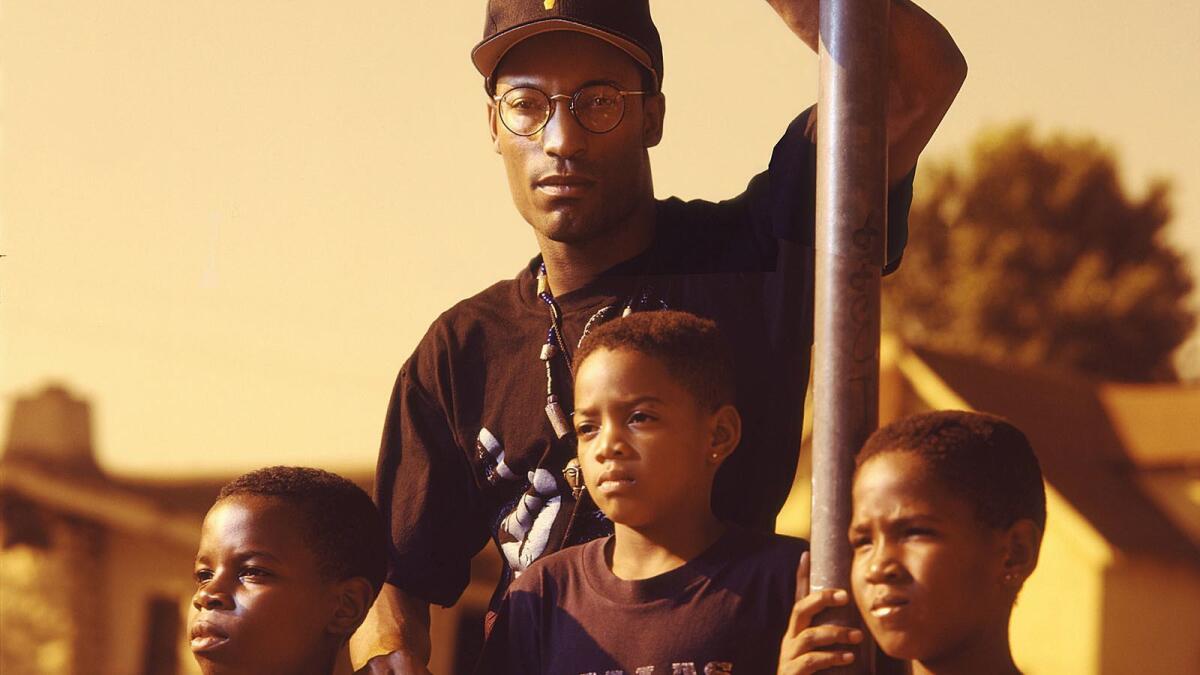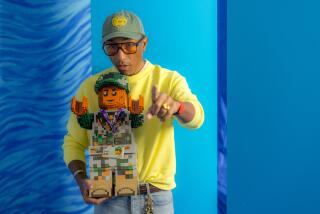Must Reads: How John Singleton’s ‘Boyz n the Hood’ shaped the life of one boy from the hood

- Share via
“Boyz n the Hood” wasn’t the first John Singleton film I saw in theaters — that distinction goes to his 1993 romance “Poetic Justice” — but it’s the one that’s stayed with me the longest. I spent much of my childhood in fear of the grim statistic that opened the film.
It comes at the film’s opening, in the form of a message flashing across the screen before the action begins: “One out of 21 black American males will be murdered in their lifetime. Most will die at the hands of another black male.”
Singleton, who died on Monday at the age of 51, following a stroke, was just 23 when he wrote and directed “Boyz n the Hood,” the 1991 film that made him the youngest and the first black director to be nominated for an Oscar, and minted his status as a visionary in black cinema.
He was pushed by the brutality of a statistic that threatened young black men like him in this country, the realities of which were barely depicted outside of rap music before Singleton — then fresh out of USC’s film program — brought the coming-of-age ’hood drama about a group of black South Central teenagers to screen.
The film, which starred Ice Cube, Cuba Gooding Jr., Morris Chestnut, Laurence Fishburne, Nia Long, Regina King and Angela Bassett, was pulled from Singleton’s own experiences growing up in South Central during the 1980s, a time when young black men in Los Angeles were six times as likely to be killed as their white peers — a figure amplified in pockets of South Central where the murder rate was more than three times the per-capita rate of L.A.
That kind of ugly truth, and the trauma it brings to those facing it head-on, is what anchored “Boyz n the Hood” and crisscrosses much of Singleton’s work, from films like “Higher Learning” and “Baby Boy” to his FX series “Snowfall.”
In the nearly three decades since its release, “Boyz n the Hood” continues to rank among essential films in the canon of tales spun out of the dark realities of life on the frontlines of the inner city.
Watching it as a young black man felt like a rite of passage.

With his 1991 drama “Boyz N the Hood,” director John Singleton became the first African American filmmaker nominated for a directing Oscar. He died following complications from a massive stroke he suffered on April 17.
On the surface, “Boyz n the Hood” is a cautionary tale about the horrors that confront black youth in neighborhoods devastated by gangs, drugs and violence.
Rappers had already been providing eyewitness dispatches from the ’hoods they came up in (the film’s title is lifted directly from an Eazy-E hit that appeared on an N.W.A album ), but the box-office success of Singleton’s debut spawned an entire subgenre of black-led “hip-hop” films as movie studios cashed in on a youthful market for street realism that humanized communities barely shown outside of news coverage.
Without “Boyz n the Hood” there would be no “Juice,” “Menace II Society,” “Above the Rim,” “Fresh,” “South Central” or “Friday.”
And yet it was Singleton’s exploration of manhood, friendship, optimism and responsibility that made the film hit home for this young black boy growing up in a lower-middle-class community in Cincinnati.
By then, I knew far too well the implications of making the wrong choice or the wrong move growing up in a neighborhood where dealers and bangers became surrogate fathers and big brothers.
It was Singleton’s exploration of manhood, friendship, optimism and responsibility that made the film hit home for this young black boy.
I’d seen boys get jumped into a gang set and fight to survive. Before I could do long division, I mastered which neighborhoods and housing projects to never step foot in. I can easily remember running full speed from the bullets indiscriminately spraying out of a red IROC-Z Camaro; and the face of the man who put a gun to my temple in high school is forever seared into my brain.
There’s an adage that was drilled into me, always by an elder black man in my family or community, “The day you were born, there was a pine box and a prison cell built with your name on it.”
I imagine Singleton heard those words early in his life. It usually came during some form of “the talk” — not the one about the birds and the bees, but the one black boys have heard for decades about the threats that await their bodies.
His commitment to showing the realities of what it feels like to be constantly haunted by thoughts of mortality and the trauma of life surrounded by conflict — for me, that’s what made “Boyz n the Hood” stick.
RELATED: Filmmaker John Singleton dies; ‘Boyz n the Hood’ was his own personal L.A. story »
For more music news follow me on Twitter:@GerrickKennedy
More to Read
The biggest entertainment stories
Get our big stories about Hollywood, film, television, music, arts, culture and more right in your inbox as soon as they publish.
You may occasionally receive promotional content from the Los Angeles Times.











